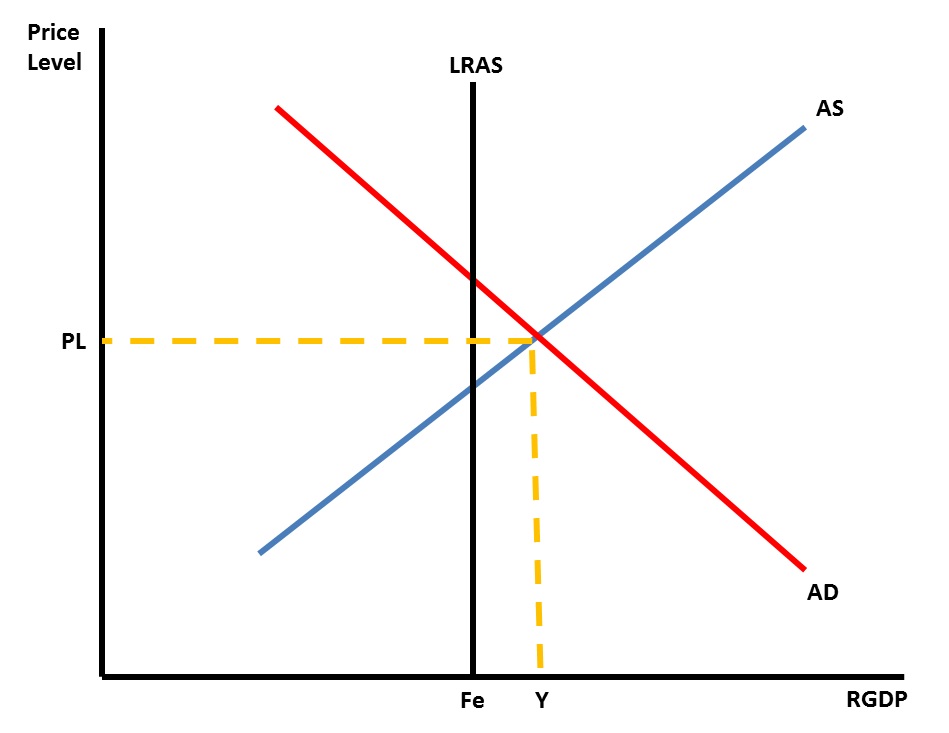
Although long-run aggregate supply curve is relative unresponsive to price change in the short term, there are forces which cause the short-run aggregate supply and short-run aggregate demand curves to move in relation to the LRAS curve. Suppose for example there is a significant decrease in the cost of energy such as the current energy revolution caused by hydraulic fracturing. In that scenario, the cost of production and transportation decreases. In that case the AS curve shifts off of the LRAS curve to the right and establishes a new equilibrium point farther down the AD curve. When the price-connector line labeled PL is drawn from the new equilibrium point to the vertical X or price axis, it meets the price line at a point lower on the axis reflecting falling prices due to lower production costs. When the quantity connector line is drawn from the RGDP line to the new equilibrium point, it strikes the RGDP line farther to the right of the LRAS curve reflecting increasing output at higher employment. The gap between the LRAS and the new equilibrium point is called an inflationary gap reflecting increased production. The new higher output point is labeled Y on the RGDP line. The Y point means total output or the dollar value of the output.